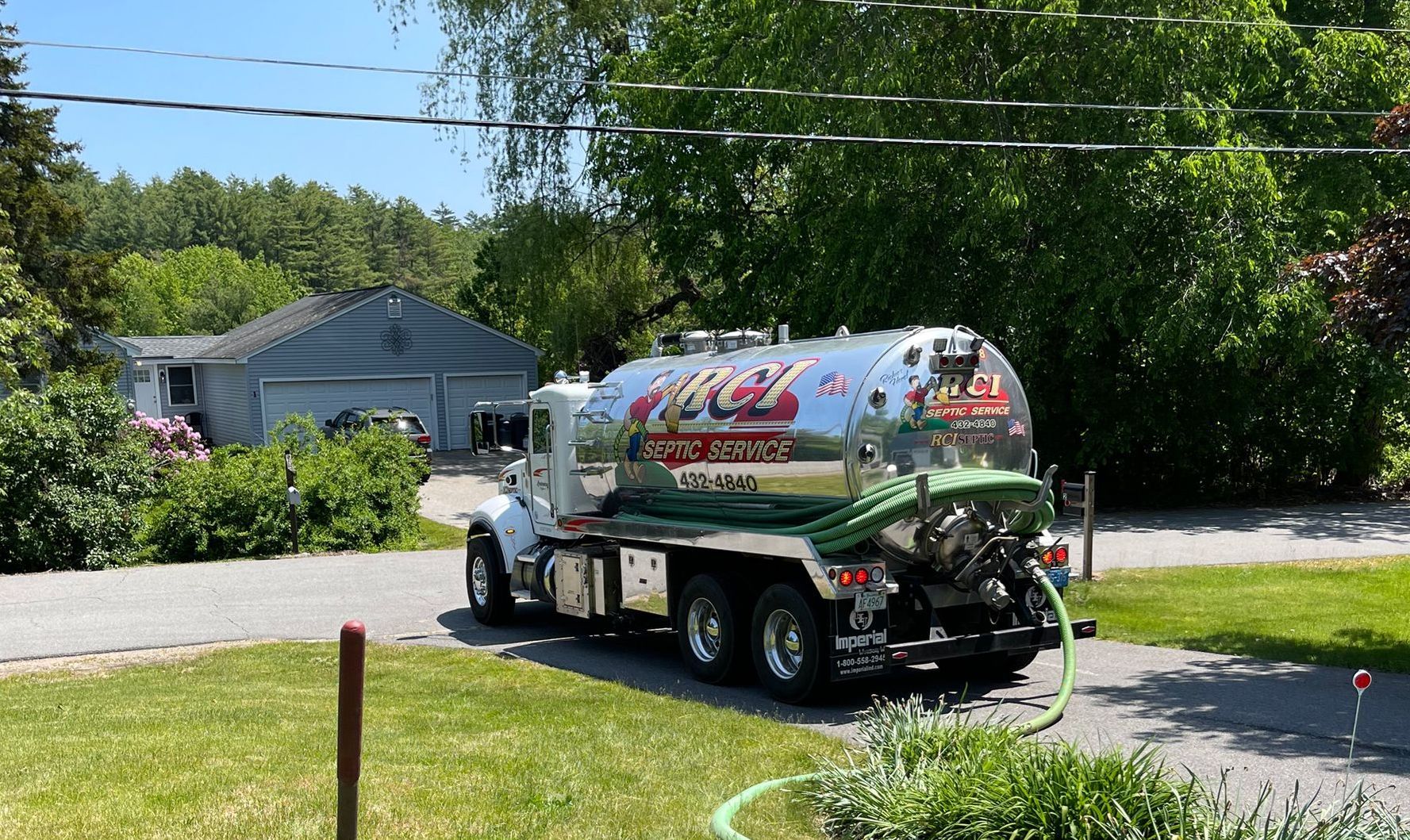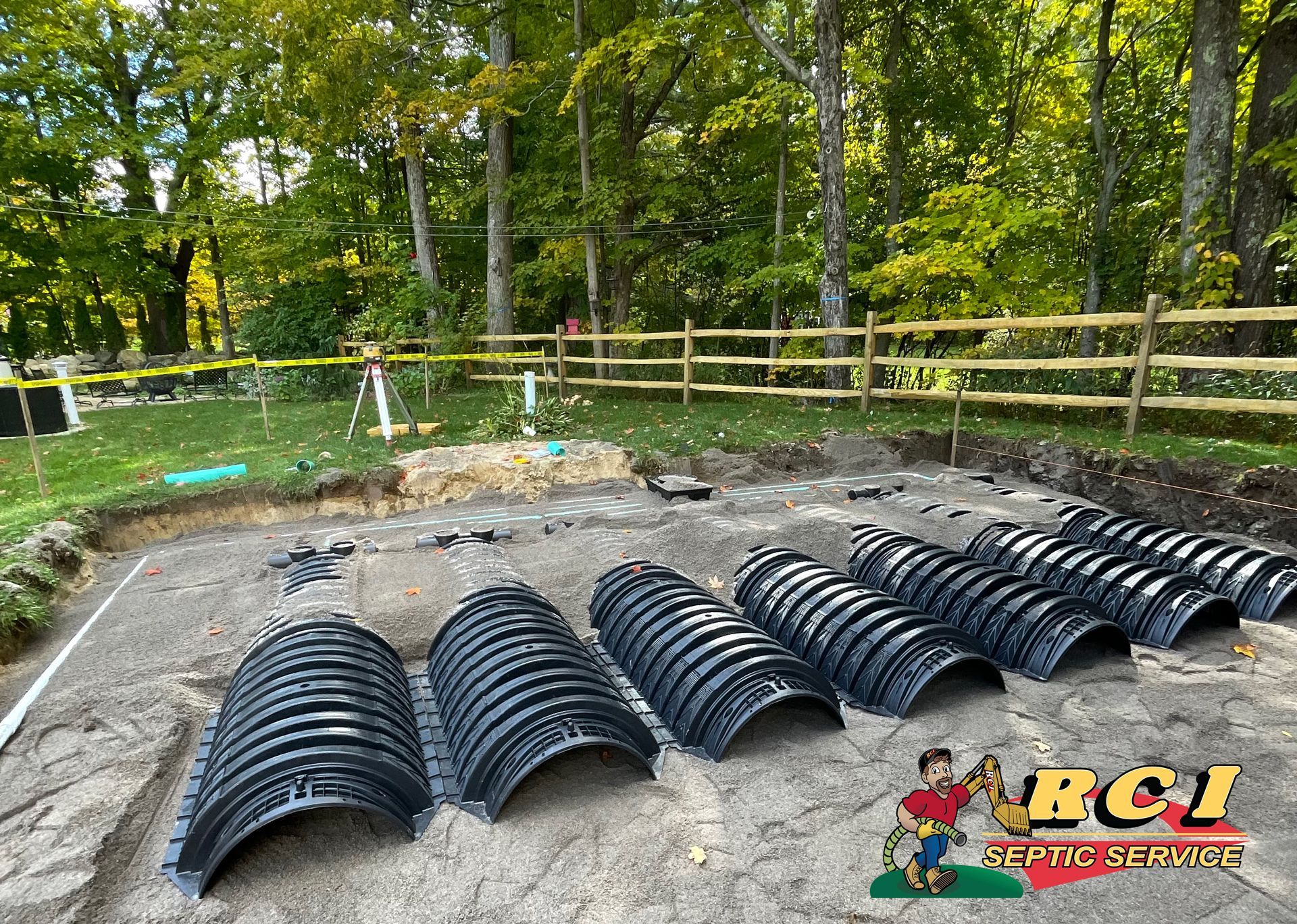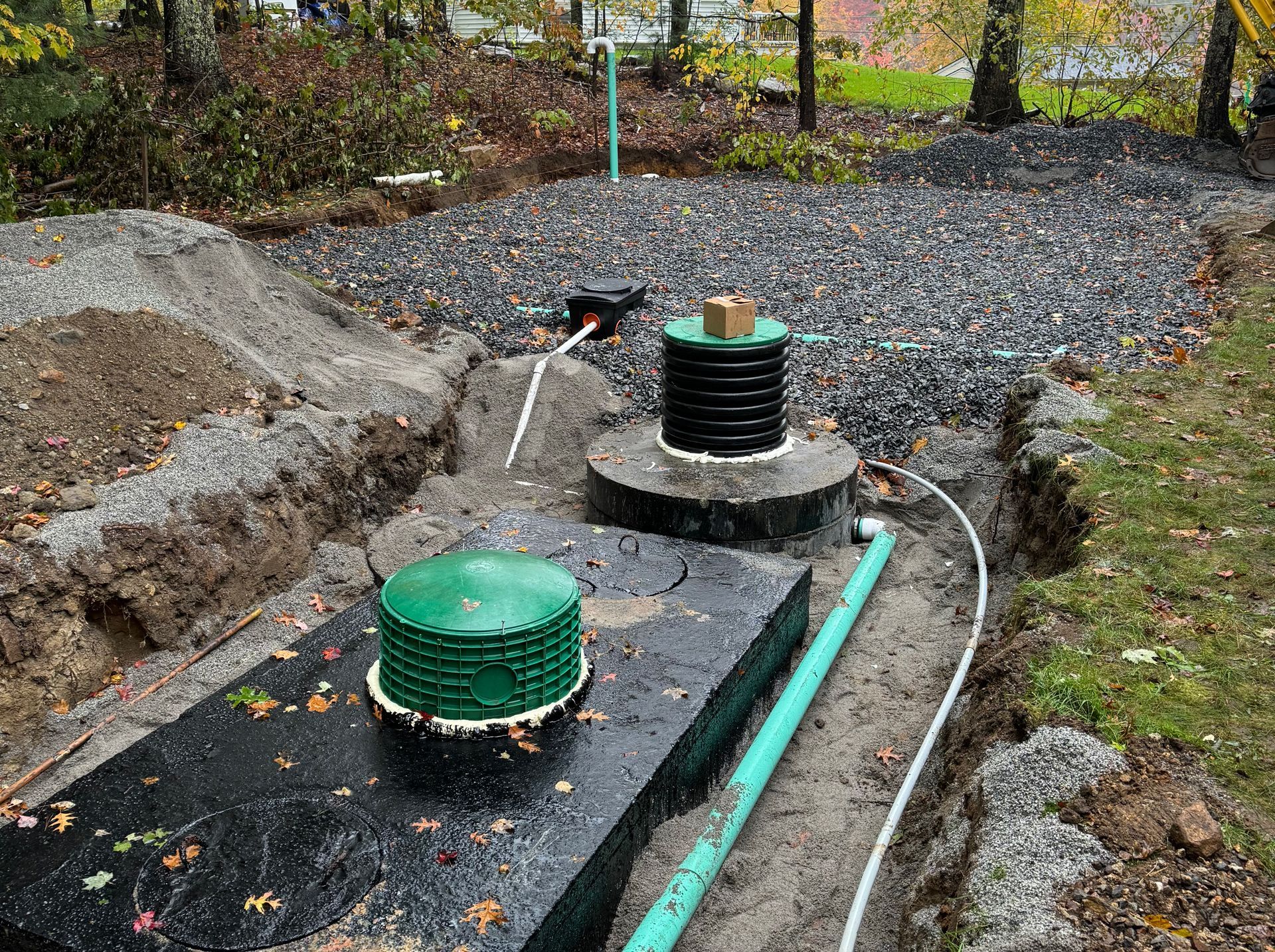The Ultimate Guide to Replacing a Septic Drain Field
If your septic system shows signs like persistent odors, slow drains, or wet spots in your yard, it might be time to replace a septic drain field. This guide will help you understand when replacement is necessary and what steps are involved, ensuring you take timely action to avoid bigger problems.
Key Takeaways
- Septic drain fields are essential for treating wastewater, using soil and microorganisms to filter out contaminants before reaching groundwater.
- Recognizing signs of a failing drain field early, such as foul odors and soggy areas, can prevent costly repairs and health risks.
- When facing septic issues, consider repair options like hydro jetting first, but be prepared to weigh replacement against the costs and extent of damage.
Understanding Septic Drain Fields and Leach Fields
A septic drain field, also known as a leach field or absorption field, plays a vital role in managing waste from your septic system. These systems work by returning clean, filtered wastewater back to the water table, ensuring that human waste remains underground and doesn’t contaminate nearby water bodies. Utilizing soil and microorganisms, septic drain fields act as subsurface systems that recycle wastewater effectively.
The structure of a septic drain field includes trenches filled with gravel and sand containing perforated pipes buried deep. These pipes allow liquid waste to filter through the sand and gravel gradually, absorbing it at a controlled rate. After the separation of solids through settling and bacterial digestion, what remains is only the liquid waste, which is then processed and absorbed into the soil. This filtration process is crucial for breaking down nutrients and pathogens, ensuring that the wastewater is treated before it reaches the groundwater.
Properly sized and designed drain fields are essential for effective wastewater treatment. The effectiveness of a drain field relies heavily on adequate soil filtration, which can be challenging in areas with overly clayey or shallow soils. Understanding how your septic drain field operates enhances your appreciation for regular maintenance and timely replacements, helping you avoid major septic problems.
Signs Your Septic Drain Field Needs Replacement
Recognizing the signs of a failing septic drain field early can save you from significant repair costs and health hazards. One of the most obvious signs is the presence of foul odors around your property. If you notice a persistent sewage smell, it’s a clear indicator that your septic system is not functioning properly. Slow drains, gurgling noises in your plumbing, and frequent sewage backups are other red flags that your drain field might be compromised. These issues could be due to a broken or malfunctioning pipe, which should be inspected and repaired promptly to prevent further damage.
Another telltale sign of a failing drain field is the presence of wet or soggy areas in your yard, especially near the septic leach field. Standing water or lush, thick grass over the drain field area during dry weather suggests that the system is oversaturated and not absorbing wastewater as it should.
In some cases, you might also notice algal blooms in nearby water sources, which indicate untreated sewage issues stemming from a faulty drain field. High nitrate levels in your well water can also signal a failing septic system impacting the drain field.
Observing any of these signs should prompt immediate action, as ignoring them can lead to total septic failure, severe health risks, and environmental damage.

Evaluating Repair vs. Replacement
When faced with septic system issues, the big question is whether to opt for a repair or a full septic system replacement. The decision often hinges on the extent of the damage and the age of your system. If your septic system suffers severe damage or has already failed completely, a full replacement might be your only option. Factors such as clogs, compacted earth, or general wear and tear can also necessitate a leach field replacement. Drain field repair can often address these issues effectively, and it's important to consider professional intervention to determine the best course of action.
Repairing a septic leach field is generally more economical than a full replacement. Simple septic tank repair job can often address issues like minor clogs or bacterial imbalances without the need for extensive excavation. Weighing the benefits and drawbacks of each option is crucial. Knowing your system’s installation date and life expectancy offers valuable insights into whether repair or replacement is the best course of action.
Ultimately, the decision should stem from a thorough assessment of your septic system’s condition and a cost-benefit analysis. The following subsections delve into specific repair options and the replacement process to assist in making an informed choice.
Repair Options
Leach field rejuvenation, also known as recovery, aims to improve the soil’s ability to absorb wastewater and restore the leach fields’ function. Professionals may also use techniques like rebalancing bacteria and aerating the soil to clear blockages and unclog pipes in septic systems. These repair methods can be cost-effective, saving you money compared to a full replacement. We do not recommend rejuvenation when a leach field has failed.
However, it’s essential to consider the extent of the damage and consult with a septic professional to determine the best repair option for your system. Proper maintenance and timely repairs can extend the life of your septic system and prevent future health risks.
Replacement Process
If your septic system requires a full replacement, understanding the replacement process can help you prepare and plan effectively. The first step is to assess the current condition of your system and determine whether a replacement is necessary. Regular service and cleaning of equipment can help avoid the need for septic replacement, but in cases of significant damage, replacement is unavoidable.
Obtaining the necessary permits is a crucial part of the replacement process, as regulations can vary depending on your location. Once the permits are secured, the next step is to remove the old septic system, including the tank and pipes, to make way for the new installation. High-quality materials should be used for the new system to ensure durability and optimal performance.
The replacement process involves careful planning and coordination with professionals to ensure that the new septic system is installed correctly and functions properly. Understanding these steps helps navigate the complexities of a septic system replacement and ensures a smooth transition.

Cost of Replacing a Septic Drain Field
The cost of replacing a septic drain field depends on the type of system recommended and designed for your property, each system installation can be different. Please contact us for average cost information.
Choosing the Right Type of Drain Field
Selecting the appropriate type of septic drain field is crucial for the efficient treatment of wastewater on your property. Various types of drain fields, such as anaerobic, aerobic, mound, and evapotranspiration systems, are each suited for different property conditions. For instance, evapotranspiration systems are effective only in dry climates with ample warmth and sunlight.
Aerobic treatment units enhance bacterial activity by introducing oxygen, allowing for more efficient wastewater treatment. Mound systems are designed for areas with limited soil depth or high groundwater levels but require considerable space. Chamber systems, which are a gravel-less alternative, allow for easier installation and are suitable for various site conditions.
Before a system is replaced, a test pit will be done in conjunction with the system designer and town where needed. The test pit along with perc testing will determine what type of system can be placed on your property, size of the system etc. Consulting with a septic professional can help you determine the best system for your needs and ensure that your property is equipped with an efficientastewater treatment solution.
Preparing for Drain Field Replacement
Preparation is key to a successful septic drain field replacement. We at RCI Septic will obtain all necessary permits and inspections necessary. We will review with you any clearing of the installation area of debris and obstacles ensures easy access for contractors and helps streamline the process.
Informing your neighbors about the installation can help prepare them for potential noise and equipment traffic. Conducting a soil test is crucial to assess its quality for effective wastewater filtration.
By taking these steps, you can ensure that the drain field replacement process goes smoothly and minimize any inconvenience.
Maintaining Your New Septic Drain Field
Maintaining your new septic drain field is essential for its longevity and efficiency. Regular maintenance, including septic tank cleaning, can prevent minor issues from escalating into significant problems. Routine inspections and having your household septic tanks pumped every three to five years can help spot and fix problems early.
Efficient water usage and avoiding flushing non-biodegradable items are crucial practices for maintaining septic system health. Additionally, protecting the drain field by not driving or parking on it and keeping stormwater drainage systems away from the area can prevent soil compaction and damage to the pipes.
Following these maintenance tips ensures that your new septic drain field continues to function effectively, avoiding costly repairs in the future.

How RCI Septic Service Can Help
RCI Septic Service has been a trusted name in the industry for over 25 years, providing homeowners with peace of mind regarding their septic systems. Our range of services includes septic pump-out, installation, repair, and replacement, focusing on efficient and eco-friendly installations tailored to specific property needs.
We emphasize thorough diagnostics and the use of high-quality materials to ensure durable repairs and replacements. For major septic system projects, we offer financing options through our partnership with St. Mary’s Bank, making it easier for homeowners to manage the costs.
Learn more about how RCI Septic Service can help you maintain a healthy septic system and avoid major septic problems by visiting our official website.
Summary
In summary, understanding the signs of a failing septic drain field and knowing when to repair or replace it can save you from significant expenses and health risks. Regular maintenance, proper preparation, and choosing the right type of drain field are crucial steps in ensuring the longevity and efficiency of your septic system.
By following the guidelines provided in this guide and seeking professional help from a trusted company like RCI Septic Service, you can maintain a well-functioning septic system and avoid major issues. Remember, a little maintenance goes a long way in preventing costly repairs and replacements.
Frequently Asked Questions
What are the signs that my septic drain field needs replacement?
If you notice foul odors, slow drains, standing water, or unusually lush grass over your drain field, it might be time for a replacement. These signs indicate that your septic system isn't functioning properly and needs attention.
How much does it cost to replace a septic drain field?
Replacement cost is depenent on the type and size of system designed to replace the drain field already in place, we will work closely with you on costs.
What types of septic drain fields are available?
There are several types of septic drain fields, like anaerobic, aerobic, mound, and evapotranspiration systems, each designed for specific property conditions. The test pit and perc tests will determine what type of system will work on the property.
How often should I maintain my septic system?
We recommend tank pumping/cleaning every year for households of 5 or more, every two years for households of 3 to 4 and every three years for households of 1 to 2.
How can RCI Septic Service help with my septic system needs?
RCI Septic Service can take care of all your septic system needs, from pumping and installation to repairs and replacements. Their commitment to quality and customer satisfaction ensures you're in good hands!


